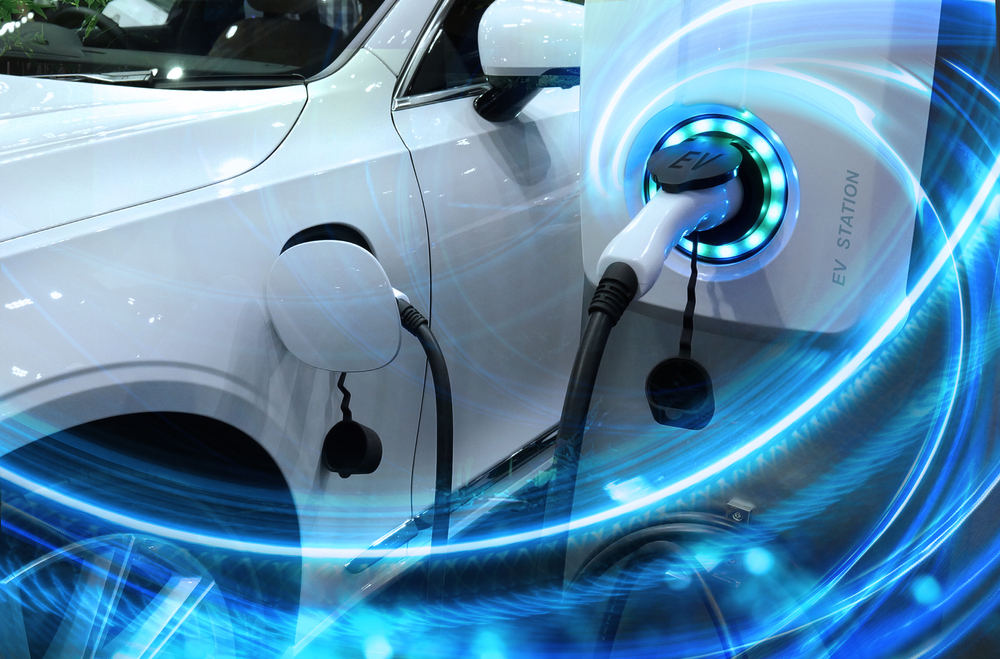While a boutique industry around converting vintage cars to electric is growing, it’s an exclusive, cost-prohibitive one
Over the next decade, millions of new battery-electric trucks, SUVs and cars are forecast to hit the market globally. In the US alone, Joe Biden is pushing for 50% of all new cars sold in 2030 to be zero-emission vehicles.
What happens to all of the old gasoline- and diesel-powered cars that are on the road right now is trickier. One idea that’s recently been in the spotlight is converting them to electric vehicles. Toyota made waves when it showcased two vintage Corollas that had been converted to electric and hydrogen power at a recent industry event where the company’s CEO, Akio Toyoda, raised the prospect of the company getting into the conversion game.
Doing this, however, isn’t likely to help those with little means to go electric. While a boutique industry around that idea is quickly growing, it’s an exclusive, cost-prohibitive one aimed at collector cars and niche enthusiast vehicles – something that won’t be an option for lower- or even middle-income people looking to electrify their current cars anytime soon. Just as the average new EV costs around $65,000, electric conversions, too, will probably be the sole purview of higher-income people until battery costs go down.
“It’s one thing to [convert] your 1965 Porsche and spend $50,000 or more to get an electric weekend car,” said Loren McDonald, the CEO of EVAdoption, an EV consulting and marketing analysis agency. “It’s another thing to take a 1980 Honda Civic that’s worth $1,000 to do the same. It doesn’t make sense.”
Transportation is the largest source of US carbon emissions, and reducing them will be crucial to mitigating the effects of climate change. Yet very few solutions exist for the fossil fuel-powered vehicles that will probably be in service for decades to come.
Despite the rapid pace of EV adoption lately, a 2021 analysis by the Rhodium Group indicates that even under the highest possible sales rates, EVs are only expected to comprise 60% of the US passenger vehicle fleet by 2060. McDonald said that means scores of fossil fuel-burning vehicles will still be on the roads for decades to come.
“This is something that’s not being talked about enough,” McDonald said. “We’re buying more new gas-powered vehicles each year than we are electric. So the supply of gas car vehicles keeps rising … and people are holding on to their vehicles longer.”
Nonetheless, the two recent concepts from Toyota showed possible solutions to this emissions challenge.
At a showcase in Japan last month, the automaker unveiled two classic 1980s Corollas that had been converted to run on battery power and compressed liquid hydrogen.
“The reality is that we cannot achieve zero carbon emissions in 2050 simply by switching all new car sales to EVs,” said CEO Toyoda at the press conference. “It is important to provide options for beloved cars that are already owned.”
Coming from Toyoda, the presentation felt like it could be a signal that his company’s massive manufacturing machine might get into the business of converting its old cars to run on electric power or hydrogen at scale. However, Toyota officials in Japan told the Guardian there is no plan for this at present.
Some automakers have actually gotten into this business, albeit on a small scale. Mini’s Recharged program launched in recent years in the UK with the aim of electrifying its iconic retro cars with 100-mile EV batteries. More recently, Renault announced it would launch electric conversion kits in France this year for some of its popular classics, like the Renault 4, Renault 5, and Twingo.
In the U.S., Ford sells a standalone electric motor from the Mustang Mach-E meant for conversions and transplants for $4,340; Chevrolet aims to sell a similar product, but its release has reportedly been delayed by supply chain issues. California is considering offering residents tax rebates of up to $2,000 to convert a gas-powered vehicle to an EV. But that’s a drop in the bucket compared to the total cost of an EV conversion.
In California, a growing number of shops will convert gas-powered vehicles to electric – for a price. With conversions running about $100,000 or more, they remain the purview of niche classic drivers and collectors with healthy budgets.
“We’re enthusiasts,” said David Benardo, the CEO of Zelectric Motors, a San Diego company that specializes in electrifying vintage Volkswagens and Porsches. “This whole company, and I think the people that are making a go of that, have all been enthusiasts. And it’s just caught on with people with deeper pockets that can support our enthusiasm.”
Zelectric’s projects start at around $70,000. Conversions are pricey in part because they’re largely done on a case-by-case basis. Getting labor specialized enough to do the work is a problem, as is sourcing batteries and materials for the job, Benardo said. Zelectric only delivers about six to eight cars a year, he said.
For these reasons and more, mass EV conversion remains elusive. “It’s not a $5,000 to $10,000 retrofit that’s going to save your old car,” he said.
Asked what it might take to convert almost any older car at scale, “I don’t even have an answer for that question,” Benardo said with a laugh.
There is some hope for the future, however. Benardo said he was encouraged by the increasing supply of batteries from EVs as sales continue to rise, which he hopes will lower costs for energy storage units outside of vehicles.
McDonald also said he’s encouraged by the number of operations popping up that retrofit commercial vehicles, such as Colorado-based Lightning eMotors, which sells new electric-converted vans, ambulances, buses and more. Other startups like Tandem seek to turn diesel semi-trucks into hybrids with a battery pack that connects directly to the truck. This, he said, is a stronger case for conversions than older, individual passenger cars.
But even if Toyota won’t be mass-converting its old cars anytime soon, McDonald said that emissions for existing internal combustion vehicles of all sorts will continue to be a challenge as the auto industry electrifies in the coming decades.
“We’re actually not going to make a dent in the problem,” McDonald said. “Getting to 50% share [of EVs] does nothing to actually reduce emissions … the only way we can do that anytime in the near term is to get rid of the gas guzzlers.”





